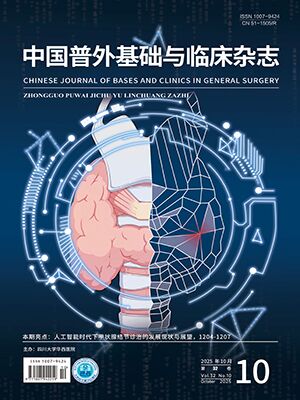| 1. |
Zhao H, Zhuo T, Hao X, et al. Effect of diabetes on the prognosis, serum inflammatory factors, and quality of life of patients with lower extremity arteriosclerosis obliterans after vascular intervention: a retrospective comparative cohort study. Ann Palliat Med, 2022, 11(8): 2720-2729.
|
| 2. |
Pabon M, Cheng S, Altin SE, et al. Sex differences in peripheral artery disease. Circ Res, 2022, 130(4): 496-511.
|
| 3. |
Willems LH, Maas DPMSM, Kramers K, et al. Correction to: antithrombotic therapy for symptomatic peripheral arterial disease: a systematic review and network meta-analysis. Drugs, 2022, 82(13): 1435. doi: 10.1007/s40265-022-01776-2.
|
| 4. |
王深明, 姚陈. 下肢动脉硬化闭塞症的血管腔内治疗. 中国普外基础与临床杂志, 2015, 22(8): 901-903.
|
| 5. |
包俊敏, 刘冰, 沈晨阳, 等. 股腘动脉闭塞症的诊断和治疗中国专家共识. 中国循环杂志, 2022, 37(7): 669-676.
|
| 6. |
Choke ETC, Peh EYL, Tang TY, et al. MagicTouch PTA sirolimus-coated balloon for femoropopliteal and below-the-knee disease: 3-year outcomes of the XTOSI Trial. Ann Vasc Surg, 2024, 106: 8-15.
|
| 7. |
Cui HJ, Wu YF. The efficacy of drug-coated balloons and drug-eluting stents in infrapopliteal revascularization: a meta-analysis. J Endovasc Ther, 2024: 15266028231222385.
|
| 8. |
Giannopoulos S, Strobel A, Rudofker E, et al. Outcomes of stented vs nonstented femoropopliteal lesions treated with drug-coated balloon angioplasty. J Endovasc Ther, 2023, 30(2): 194-203.
|
| 9. |
Liu L, Zhao J, Bi J, et al. Percutaneous mechanical atherothrombectomy using the rotarex device in acute ischemic disease of lower limbs: a china retrospective multicenter study on 186 patients. Ann Vasc Surg, 2022, 85: 146-155.
|
| 10. |
Fan W, Lu S, Tan J, et al. Midterm results of drug-coated balloon alone or combined with rotarex thrombectomy device for treatment of subacute femoropopliteal artery thrombotic occlusion. Ann Vasc Surg, 2023, 92: 240-248.
|
| 11. |
中华医学会外科学分会血管外科学组. 下肢动脉硬化闭塞症诊治指南. 中华普通外科学文献(电子版), 2016, 10(1): 1-18.
|
| 12. |
Keefe N, Shull T, Botea L, et al. Drug-coated balloon versus drug-eluting stent: the debate of leave nothing behind. Semin Intervent Radiol, 2023, 40(2): 161-166.
|
| 13. |
Tepe G, Brodmann M, Werner M, et al. Intravascular lithotripsy for peripheral artery calcification: 30-day outcomes from the randomized disrupt PAD Ⅲ trial. JACC Cardiovasc Interv, 2021, 14(12): 1352-1361.
|
| 14. |
褚云峰, 彭艳斌, 陈仲, 等. 巧克力球囊扩张血管成形术在股腘动脉病变中的临床应用. 血管与腔内血管外科杂志, 2024, 10(05): 573-577.
|
| 15. |
白森. 抗血小板联合抗凝药物治疗冠心病合并下肢动脉闭塞的临床效果. 中国当代医药, 2022, 29(3): 17-20, 24.
|
| 16. |
Boc A, Eržen B, Perme RL, et al. Bailout stenting in femoropopliteal arterial segment. VASA, 2022, 51(1): 13-18.
|
| 17. |
Han D, Shin DG, Kang MK, et al. Complications associated with the Rotarex® wire in a patient with peripheral artery disease. Clin Case Rep, 2021, 9(5): e03195. doi: 10.1002/ccr3.3195.
|
| 18. |
Gouëffic Y, Torsello G, Zeller T, et al. Efficacy of a drug-eluting stent versus bare metal stents for symptomatic femoropopliteal peripheral artery disease: primary results of the EMINENT randomized trial. Circulation, 2022, 146(21): 1564-1576.
|
| 19. |
姜国忠, 李雪岩, 赵健飞, 等. 血栓旋切器联合药物涂层球囊治疗股腘动脉继发血栓的体会. 血管与腔内血管外科杂志, 2018, 4(2): 129-131.
|
| 20. |
岳彦宇, 冉峰. Rotarex机械血栓切除术在老年急性肢体动脉闭塞症中的应用进展. 实用老年医学, 2023, 37(5): 524-527.
|
| 21. |
庄金满, 李天润, 李选, 等. Rotarex旋切导管在股腘动脉狭窄合并血栓形成中的应用. 北京大学学报 (医学版), 2023, 55(2): 328-332.
|
| 22. |
Liao CJ, Song SH, Li T, et al. Combination of Rotarex thrombectomy and drug-coated balloon for the treatment of femoropopliteal artery in-stent restenosis. Ann Vasc Surg, 2019, 60: 301-307.
|
| 23. |
丁洁, 李天润, 庄金满, 等. Rotarex机械血栓切除系统联合药物涂层球囊治疗股腘动脉支架内再狭窄. 中国微创外科杂志, 2024, 24(3): 178-183.
|
| 24. |
Li D, Long J, Zhang J, et al. Association between red cell distribution width-and-albumin ratio and the risk of peripheral artery disease in patients with diabetes. Front Endocrinol (Lausanne), 2024, 15: 1272573. doi: 10.3389/fendo.2024.1272573.
|
| 25. |
Vieira-Cardoso N, Pereira-Neves A, Fragão-Marques M, et al. Red blood cell distribution width as a predictor of cardiovascular outcomes in extensive aortoiliac disease. J Cardiovasc Surg (Torino), 2023, 64(1): 48-57.
|
| 26. |
王鹏, 吕卫华. 2型糖尿病患者红细胞分布宽度与外周动脉疾病相关性研究. 中国现代医生, 2018, 56(16): 23-26.
|
| 27. |
黄聪. 红细胞分布宽度、中性粒细胞/淋巴细胞比值及白蛋白与下肢动脉硬化闭塞症的相关性. 福州: 福建医科大学, 2018.
|
| 28. |
Tscharre M, Lee S, Kopp CW, et al. Mean corpuscular volume predicts adverse outcomes following peripheral angioplasty with stenting and is associated with on-treatment platelet reactivity. Angiology, 2021, 72(1): 16-23.
|




